Ayaneo AM02 Retro Mini PC review: Retro style, modern performance
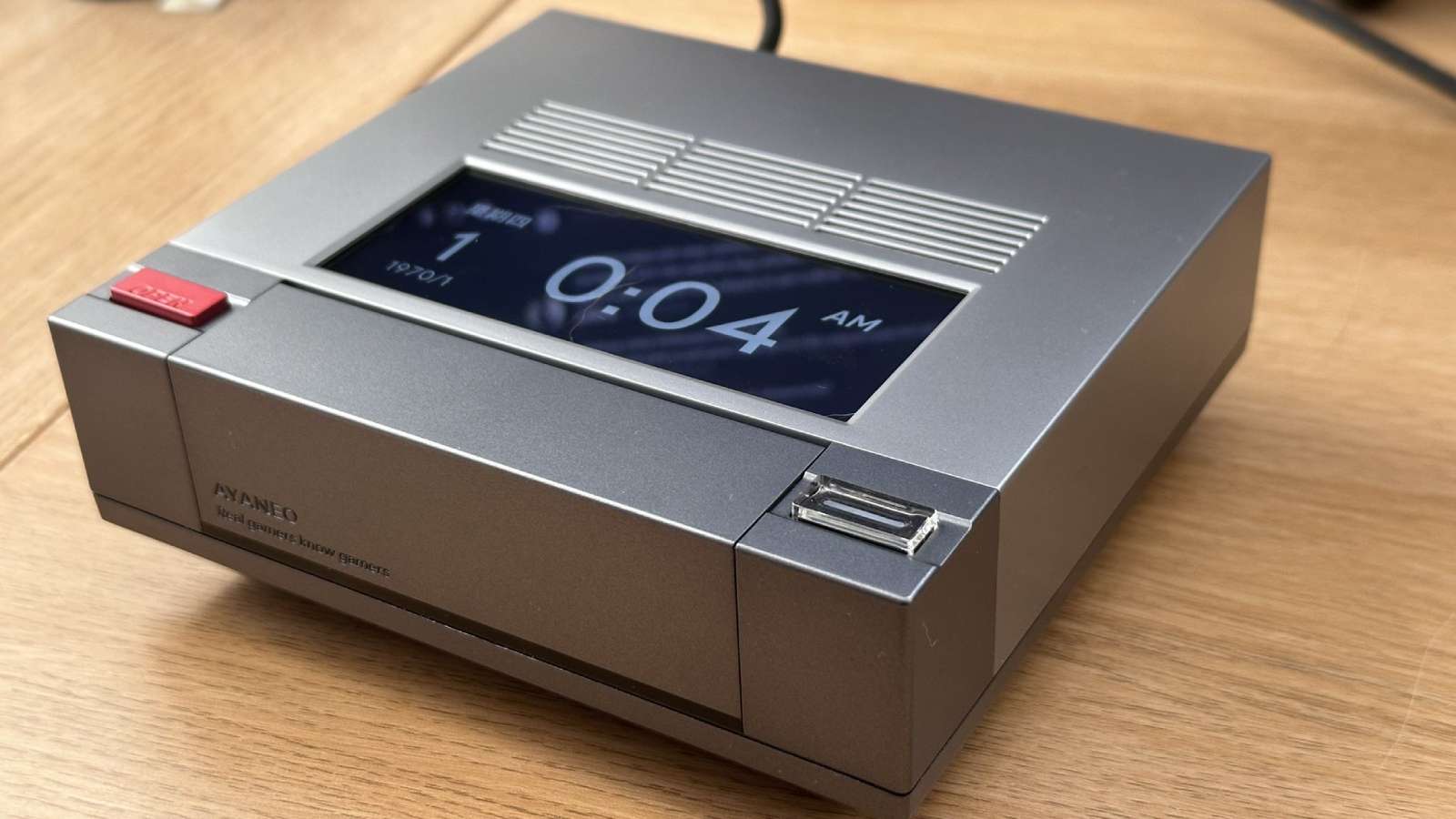 Dexerto
Dexerto Ayaneo’s AM02 Mini PC is the second device of Ayaneo’s new desktop lineup, but does the device manage to wow outside of its design? We find out.
Ayaneo is no stranger to making handhelds and is almost continuously releasing new iterations and configurations every month. However, the company has recently been exploring the increasingly popular Mini PC form factor. The retro AM01 proved to impress us when it debuted late last year, and the AM02 offers up more performance, and more than a handful of gimmicks up its sleeve to sate those looking for a portable PC.
I’ve been using the AM02 for a while, set it up with games, and used the device in multiple scenarios. But, after all that, is it worth the price tag that Ayaneo wants users to buy the Mini PC for?
Key specs
- CPU: AMD Ryzen 7 7840U
- GPU: AMD Radeon 780M
- RAM: 32GB DDR4
- Storage: 1TB
- Price: Starts at $499-769 (reviewed)
- Where to buy: IndieGoGo
Design
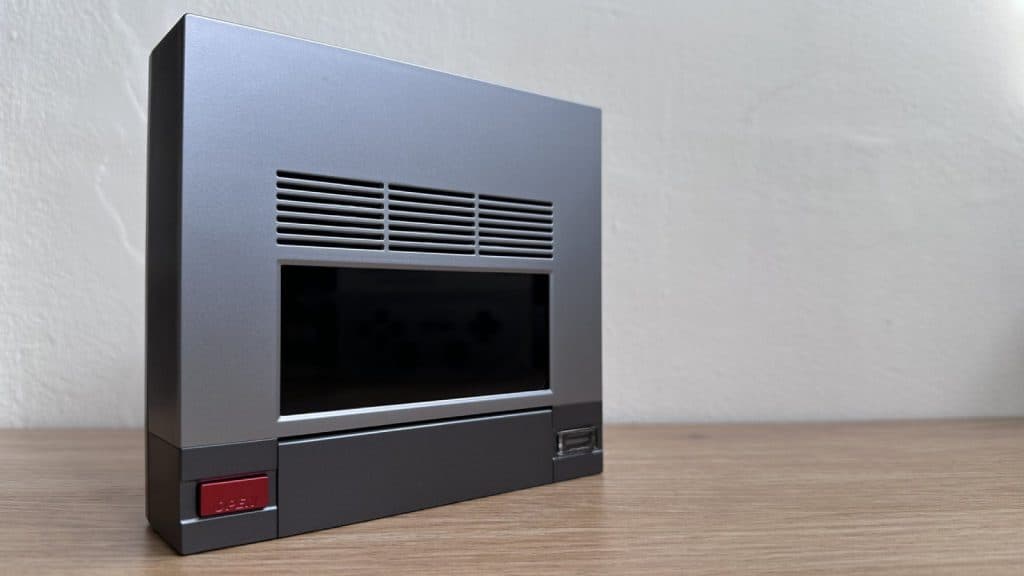 Dexerto
Dexerto The Ayaneo AM02 doesn’t house any fancy unboxing tricks up its sleeve like the Slide before it. Instead, it’s a more traditional unboxing and offers up just about everything you need to get started, including a 100W power cable, USB converters, and even a screwdriver set with spudgers if you purchase the barebones version of the device, which comes without RAM or storage.
The physical design of the AM02 itself is reminiscent of an NES, but with a narrow four-inch touchscreen at the front, and polished in a silver finish for its plastic body. It certainly looks fantastic, but I can’t help but worry that the silver plastic might be prone to scuff marks over time. Like the NES, the front compartment flips up to reveal a USB-C port, complete with Thunderbolt 4 functionality, alongside several USB-A ports and a 3.5mm jack. In a nice touch, this flips up with the metallic red button placed on the right-hand side of the device.
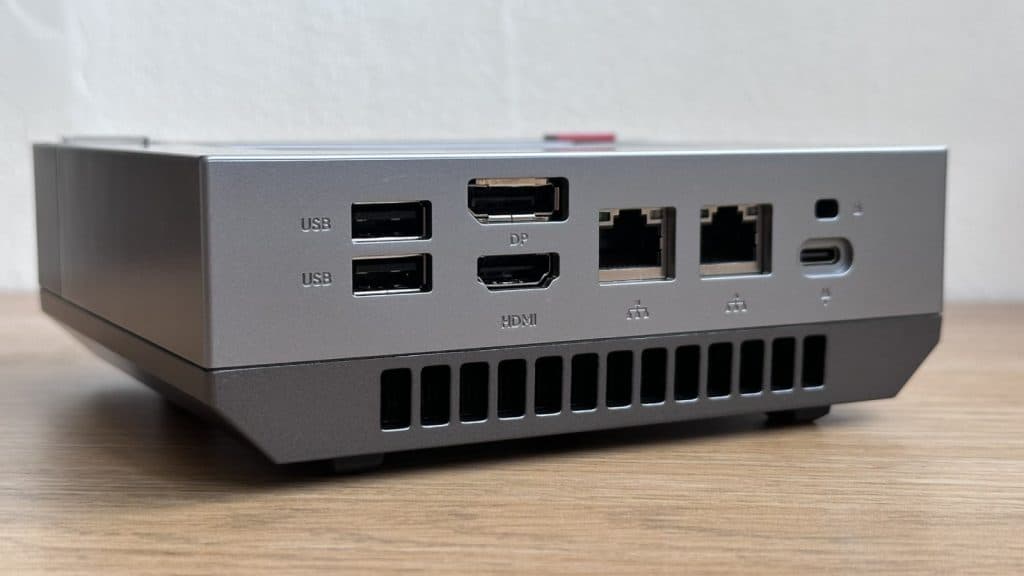 Dexerto
Dexerto Around the back, we get more IO ports, including two ethernet ports, two USB-A ports, one USB-C for power, alongside a single HDMI and Displayport input each. This makes for a great suite of IO, with more room for expansion if you own a Thunderbolt 4 dock.
Using the included kit, taking the AM02 apart is fairly simple, but to access the SSD and RAM, you will need to remove the cooling solution, which might be a challenge for those who are not well-versed in taking electronics apart. So, if you’re eyeing up an AM02 barebones kit, just bear in mind that it might not be as friendly as you might think. A small fan and heatsink cool the device, which can be set up to 45W of total TDP.
Features
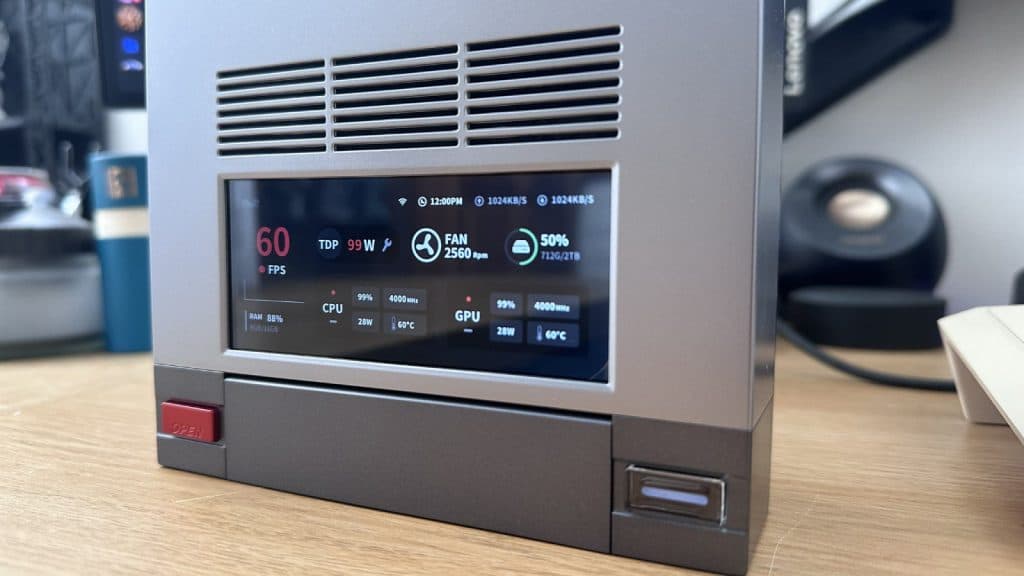 Dexerto
Dexerto The AM02 comes with a small four-inch touchscreen display on the front. By default, you can set this to automatically display framerates, as well as system usage readouts, which can be handy. Swipe along, however, and you can also customize it with a readout of the date and time. Ayaneo claims that further customization of the panel could be coming in future software updates.
With the system booted up, Ayaneo offers a small button on your desktop that acts as a quick settings function, allowing you to switch up game profiles, TDP, and more. While Ayaspace has been improved over the last year and a half, it’s still not without its quirks with odd translations here and there. But, one thing that Ayaspace does incredibly well is offer you control of your system via the use of a game controller.
I hooked up an 8BitDo SN30 to the system and was quickly navigating through Steam and internet browsers with ease, thanks to Windows 11‘s onscreen keyboard functions. Ditching a mouse and keyboard and solely using a controller feels great. But, there’s only one issue. If you are navigating Ayaspace with a controller alone, once the Ayaspace button has been clicked, there’s no way to back out of it without reaching for a mouse, which is less than ideal, if you’re sat in a living room.
Secondly, while you can entirely hide the Ayaspace button, there’s no way to temporarily hide it. So, if you have an OLED TV, you might worry about burn-in from the onscreen widget. I would have preferred to see a widget that pops up when your mouse enters the corner of the screen, allowing you to activate the widget itself.
Performance
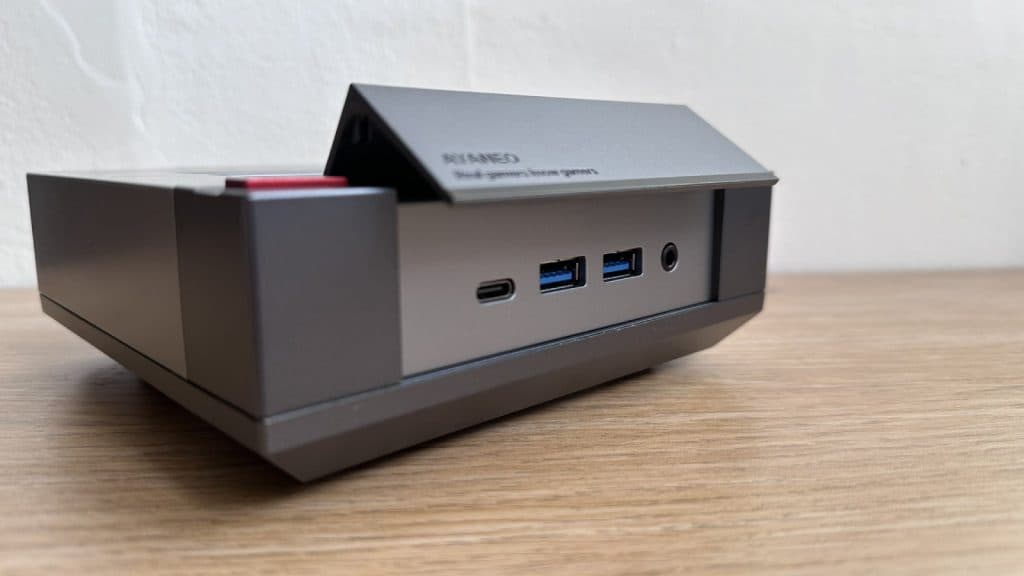 Dexerto
Dexerto The AM02 uses the AMD Ryzen 7840U, which we have looked at extensively in the past, and connected to a dedicated power source, it manages to reach performance beyond the level you’d see in a handheld like the Ayaneo Slide or Air 1S.
AAA titles
We pushed the handheld using modern titles like Baldur’s Gate 3 and Cyberpunk 2077, to see exactly how the device managed to perform at 45W, and what resulted was a playable experience at 1080p and below. You won’t attain 60FPS in most modern AAA titles without the usage of FSR 2 or other upscalers.
Indies and older-generation titles can be TDP limited to 15W and below, where the 7840U really does some heavy lifting, and shows off just how small, quick, and efficient the device can run. Titles like Fear and Hunger, Rogue Legacy 2, and The Binding of Isaac all ran superbly well.
But if you’re using it for modern gaming and playing the latest titles, you’ve forgotten the “Retro” part of the AM02’s name.
Retro gaming
The AM02 shined when I put my installation on RetroBat onto the system. Emulation for all systems including the PS3 functioned nearly flawlessly at their native resolutions. In particular, PS2 generation titles can be pushed to several times their internal resolution to get them looking nice and sharp, to boot.
Even demanding titles like Xenoblade Chronicles X for Wii U ran perfectly using the AM02, which means that it’s no slouch when it comes to really bringing retro performance to your living room at the touch of a button. But, the AM02 isn’t quite a home run, as it does have some flaws when pushed to the brink.
Thermals & noise
The AM02, at 45W, can idle at around 80 degrees if the CPU is set to boost automatically. Turned off, it gets slightly more under control in the 70s. As a result, the AM02, at default settings, can have its loud, single fan get active even while it’s not under any kind of sustained load.
The key to controlling the noise of the AM02 fan lies in the careful management of total TDP. At around 20W and under, fan noise will not be an issue. Above that, it can get quite hot, especially when under lots of stress. You can configure curves in Ayaspace too, but considering how hot the chip can get while under load, you may hit thermal thresholds.
Attempting to play Tekken 8 with my 4K desktop settings via Steam Cloud caused at least one shutdown, but that was completely by accident, and not a sensible use-case for a device like this. But, what it does show is that you don’t want to push this device to the brink, or it’ll fall over the edge, so to speak.
Should you buy it?
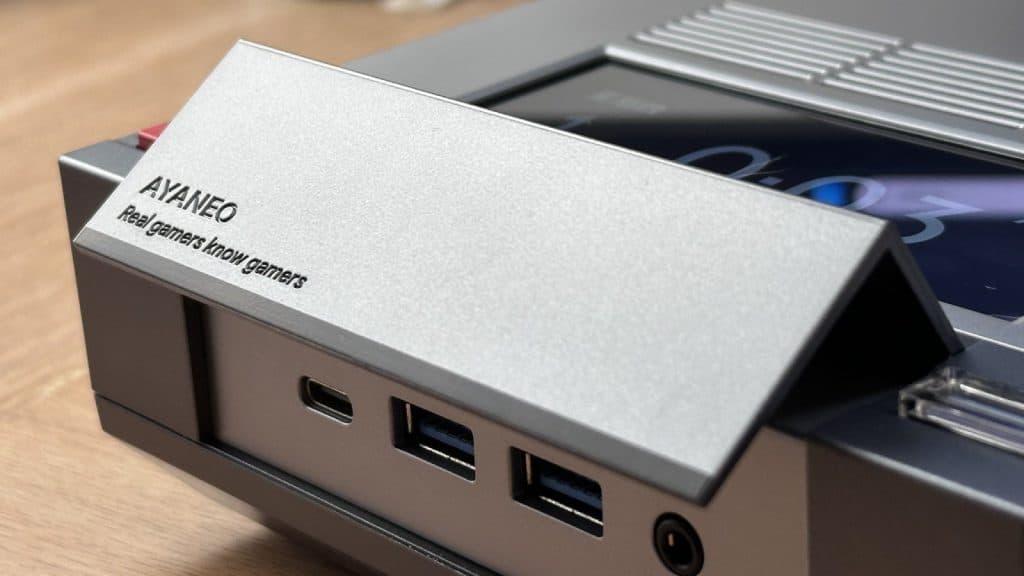 Dexerto
Dexerto The Ayaneo AM02 is a great little Mini PC, but you have to go in knowing what you are going to do with it. Don’t expect performance on the same level as a gaming PC, but for all uses outside of that, it runs beautifully, and many of the functions that Ayaneo touts are great. I just wished that its thermals were slightly better on the system itself, and a quieter fan was put into the chassis.
Verdict: 4/5
For retro gaming and emulation, the AM02 is perfect, and the design of this little box is utterly fantastic. The four-inch touchscreen is more of a gimmick than actually being of much use, but its design is an interesting little flair in a segment populated by boring black boxes. For the price of the base model, this Mini PC certainly impresses.